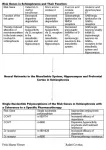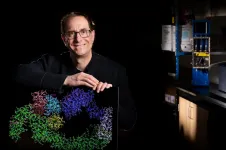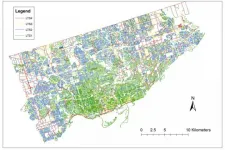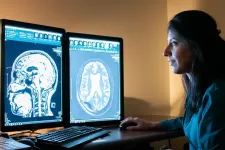The combination of the COVID-19 pandemic and the opioid overdose epidemic fueled by high-potency synthetic opioids have led to increased overdoses. However, national and state leadership, health professions schools, and health care systems in the US have not responded sufficiently. More than 83,000 drug overdose deaths occurred in the US in a 1-year period ending in June 2020, the highest number of overdose deaths ever recorded in a 12-month period, and an increase of more than 21% compared with the previous year.2 Nationally, 67% of opioid overdose deaths involved fentanyl in 2018 and drug overdoses increased most among non-Hispanic Black individuals. Despite these devastating losses, access to evidence-based care to prevent opioid overdose and treat OUD remains highly regulated, restricted, and very limited, particularly among Black individuals with OUD and in rural communities. It is estimated that only 18% of individuals with OUD in the US receive highly effective medications, such as buprenorphine or methadone, to treat OUD.3 For many, the COVID-19 pandemic has further limited access to medications for OUD (MOUD).
Unlike other medical conditions, treatment of OUD has substantial and unique restrictions imposed by US federal and state laws. Such restrictions do not facilitate access to care; on the contrary, they impede it. Methadone for OUD must be administered or dispensed by an accredited, registered, and certified opioid treatment program. The Drug Addiction Treatment Act of 2000 (DATA 2000) requires that prescribers of buprenorphine apply for a waiver (ie, X-waiver) to prescribe once certain educational and practice requirements have been met. However, this restriction has outlived any usefulness.
Although appropriate training is essential to care for any disease, federal law does not require such training or registration to prescribe for other diseases (and more specifically, not for prescribing opioids for other indications such as pain). However, health professions schools are mandated by entities such as the Association of American Medical Colleges (AAMC) and the Accreditation Council for Graduate Medical Education (ACGME) to provide training to treat most other diseases. As of 2018, only 1 of 191 medical schools provided training to their students that was sufficient to meet the DATA 2000 training requirement. Additionally, neither AAMC nor the ACGME require competency in OUD evaluation and treatment in medical education. Together, the absence of health professions school and graduate education; prescribing restrictions; stigma and misinformation among patients, families, and health care professionals; archaic payment structures and systems that emphasize acute care models over long-term treatment; care largely separate and uncoordinated from the rest of health care; and lack of support for patients' psychosocial needs have impeded the large expansion of MOUD treatment that is required to meet the need.
In an effort to address the vast need for MOUD treatment accessibility in the US, the HHS exemption proposed changes as follows. Physicians would need to place an "X" on the prescription, note that the prescription is to treat OUD, maintain separate records for such patients, prescribe to patients in the state in which they practice, and limit prescribing to no more than 30 patients at one time.1 Physicians who want to treat more than 30 individuals with OUD would need to seek additional training through the current 8-hour DATA 2000 mechanism. Notably, these guidelines do not apply to the large workforce of advanced practice clinicians who remain mandated to complete 24 hours of training to prescribe buprenorphine.
Relaxing restrictions on physician prescribing does have the potential to expand access to treatment and reduce opioid overdose deaths as it has in other countries. For example, in France, buprenorphine became available in 1995 and an estimated 3% of patients with OUD were treated that year with MOUD; by 2006, 67% of the 180?000 people with OUD were treated with methadone (n?=?26?000) or buprenorphine (n?=?95?000) in a setting with relaxed MOUD regulations.4 Rates of prescribing continue to be high, although over time, initiation of prescribing has shifted somewhat from primary care to specialized addiction treatment centers. While there are some cautionary tales from the rapid expansion of buprenorphine prescribing in France, such as subtherapeutic buprenorphine dosing, it has been estimated that a similar increase in prescribing in the US that occurred in France could have potentially led to an estimated 37?000 fewer deaths in 2018 alone if it were used appropriately, adherence was high, and the same conditions were being treated in the US as in France.4
Inaction is not an option when 40% of counties in the US do not have a single prescriber of MOUD.5 The proposed 2021 HHS guidelines represented progress toward MOUD expansion; however, they were far from enough to address the opioid overdose crisis. The US needs to normalize the treatment of OUD among health care professionals and individuals with OUD. Practicing health care professionals should be encouraged and incentivized to prescribe and obtain any needed training or support. OUD identification, evaluation, and treatment education should be integrated in all health care professions schools and should be implemented throughout all health care systems. It is also important to emphasize that medical management of OUD is effective, that buprenorphine alone at therapeutic doses can improve outcomes and prevent overdose,6 and that detoxification alone is insufficient to prevent overdose and treat OUD.
Buprenorphine prescribing by trained health care professionals can promote high-quality care and the new exemption could increase that prescribing. However, much more will need to be done. These additional steps include eliminating limits on the number of patients who could be treated by individual clinicians. One estimate suggests that by eliminating patient limits, the US could potentially treat nearly 800?000 additional individuals with OUD.7 Further needed actions include allowing prescribing by advanced practice clinicians; advocating for addiction training efforts at health professions schools, postgraduate programs, and as part of continuing education to make up for previously absent training; allowing office-based methadone treatment to ensure expansion to all types of MOUD; enforcing parity of benefits and insurance coverage for treatment; and addressing the stigma of addiction and addiction treatment. The effects of regulatory changes should be studied after implementation.
Recommendations to Help Ensure Access to High-Quality Medication Treatment for Opioid Use Disorder (OUD)
Pass federal legislation to ensure lasting changes on a national scale
Eliminate buprenorphine patient limits and Drug Enforcement Administration audits that discourage prescribing; include advanced practice clinician prescribers in any legislative change; and remove restrictions on methadone prescribing and dispensing outside opioid treatment programs
Improve and provide training for prescribers and health professional teams at all levels
Incentivize training and offset clinician training time; provide a menu of training options appropriate to the needs of the clinician; integrate substantial training into specialty-specific health professions schools, postgraduate programs, continuing education, and maintenance of certification; include patient perspectives in all training; and provide experiential learning, such as apprenticeship models (eg, with mentors), in practice
Expand access to all forms of OUD treatment shown to have efficacy
Increase access to strategies that reduce consequences of drug use ("harm reduction"); increase access to methadone treatment (eg, via primary care clinicians and pharmacies); and increase access to all treatment options (beyond specialty treatment programs) including medications
Address stigma and include patients receiving medications for OUD (MOUD) in educational campaigns
Enforce Parity (Mental Health Parity and Addiction Equity Act) to ensure equitable coverage and reimbursement for addiction and behavioral health treatments
Ensure equitable access to MOUD in all treatment settings
Study the effects of regulatory changes after implementation
Comprehensive treatment for OUD, including medical, psychiatric, and social services, can and should be provided by experienced clinicians and should be expanded, but MOUD urgently needs to be more accessible. The proposed HHS exemption would offer progress toward achieving that goal even though it was not, as written, a panacea. Improving access while ensuring high-quality care for individuals with OUD to sustain lasting reductions in opioid overdose deaths will require implementing these guidelines and additional strategies, many of which have been suggested for decades. As the new administration considers how to move forward, enacting an improved version of these guidelines and durable legislative changes to ensure access to high-quality MOUD offers a possibility to meaningfully address the overdose crisis.
INFORMATION:







